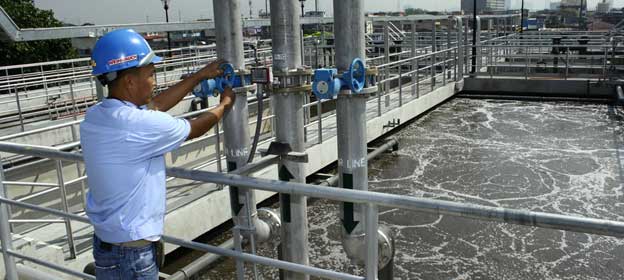Needed in the Global South: Wastewater Collection for COVID-19 Detection

HAMILTON, Canada, Aug 26 (IPS) - Understanding the scale and intensity of the COVID-19 virus and its emerging variants, predicting the pandemic’s direction, and developing and refining associated management response options are challenges likely to confront public-health officials and national governments worldwide well into the future.
Diagnostic testing capacity for COVID-19 varies widely from country to country and often is insufficient. Hospital admissions can lag infections by weeks and asymptomatic or mild cases go unreported.
One diagnostic option drawing growing attention and application: Detecting COVID-19 in community and urban wastewater.
Monitoring wastewater for COVID-19 offers near real-time insights into the scale of the virus’ presence among a vast number of people, and can reveal the community's transmission trajectory – rising or falling.
Sewers offer an early warning system for COVID-19 outbreaks. Wastewater with higher concentrations of the virus corresponds to higher numbers of infected people. Compared to systematic testing of individuals, wastewater analysis is not only less invasive and simpler, it requires fewer resources, equipment, and skilled professionals.
Detecting viruses in a community this way has been practiced since the early 1990s when extensive wastewater surveillance supported efforts to eradicate polio. Such experience over the years has proven that monitoring wastewater for pathogen traces is a reliable and effective disease surveillance technique.
Armies of researchers with enhanced pandemic funding worldwide have been pursuing wastewater monitoring since the WHO's initial COVID-19 alarms last year.
A Google search of “COVID and wastewater” shows over 53 million results, and Google Scholar reveals around 20,000 publications on the subject, one-third of them produced since the beginning of 2021.
One expert paper this year proposed an archived time series of urban sewage samples as a record of pandemics and other features of the evolving Anthropocene — an invaluable resource for future anthropologists.
Most success stories about COVID-19 surveillance in wastewater and sewage sludge have come from developed countries. In the developing world, however, the picture is very different. Unfortunately, about 90% of wastewater generated in low-income developing countries is not even collected; it is released to the environment untreated. In lower-middle-income countries, about 57% of wastewater is uncollected.
Monitoring wastewater for COVID-19 enables timely preventive and coping measures, which would help developing nations immensely. The “dirty secret” in many such countries, however, is that wastewater goes untreated into the environment — often entering freshwater bodies through hidden or visible pipes, for example, or contaminating groundwater. Wastewater monitoring, collection, treatment, and safe reuse or disposal is essential for protecting human health and the absence of such practices leads to massive water pollution. Sadly, it also creates a missed opportunity for near-real-time disease surveillance, depriving about half of the global population of the benefits of timely response to outbreaks of COVID-19, with similar virus-induced diseases and pandemics foreseen.
The international disparity in these pathogen early warning systems is a wakeup call for the world at large, which aims at halving the volumes of untreated wastewater by 2030 (Sustainable Development Goal SDG, 6.3.1 of the 2030 Global Sustainability Agenda).
Six years into the SDG era, the assessment of wastewater treatment status at the national level reveals a gloomy scenario in low-income and lower-middle-income countries, which are far from achieving the wastewater treatment and safe reuse target agreed to in 2015.
With more frequent pandemic-like situations expected in years to come, a radical rethinking is widely needed, and efficient wastewater management and monitoring must be established in developing countries to protect our environment and countless lives.
Establishing wastewater collection and conveyance networks, and constructing wastewater treatment plants equipped with near-real-time diagnostic systems for diseases like COVID-19 are key to improving human health in low-income and lower-middle-income countries. Other tactics include implementing effluent standards and offering incentives for households and industrial sectors.
Beyond expanding these disease early warning systems globally, effective wastewater collection and management in developing countries would yield important resources to offset costs. Wastewater is a source of valuable water, nutrients, precious metals, and energy.
From every viewpoint, the investment required to properly manage wastewater globally pales by comparison to the multidimensional benefits available.
Manzoor Qadir is Assistant Director of the UN University's Canadian-based Institute for Water, Environment and Health, which is supported by the Government of Canada and hosted at McMaster University, Hamilton, Ontario. The Institute marks its 25th anniversary this year.
Follow @IPSNewsUNBureau
Follow IPS New UN Bureau on Instagram
© Inter Press Service (2021) — All Rights Reserved. Original source: Inter Press Service
 Global Issues
Global Issues